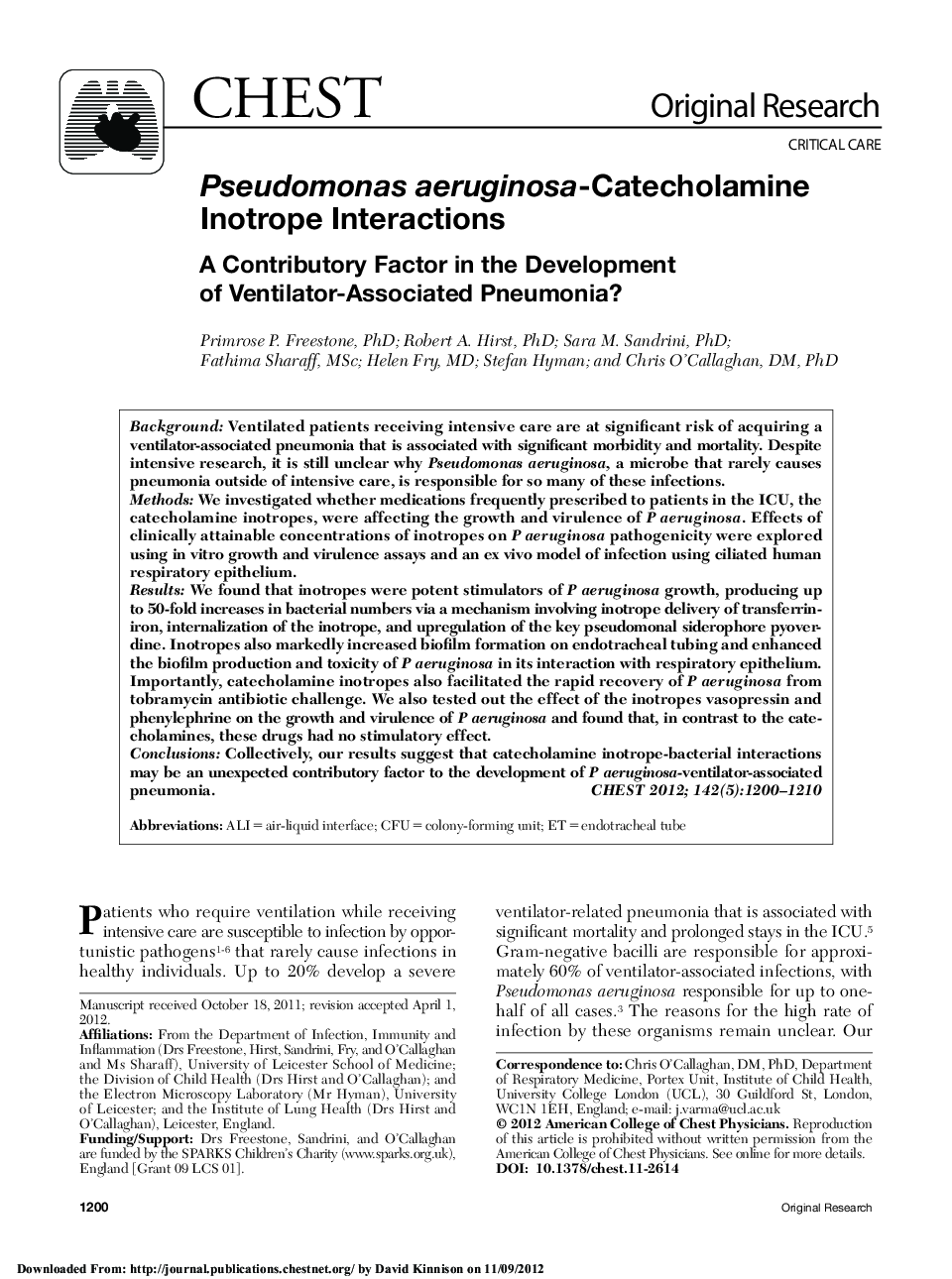| Article ID | Journal | Published Year | Pages | File Type |
|---|---|---|---|---|
| 2900991 | Chest | 2012 | 11 Pages |
BackgroundVentilated patients receiving intensive care are at significant risk of acquiring a ventilator-associated pneumonia that is associated with significant morbidity and mortality. Despite intensive research, it is still unclear why Pseudomonas aeruginosa, a microbe that rarely causes pneumonia outside of intensive care, is responsible for so many of these infections.MethodsWe investigated whether medications frequently prescribed to patients in the ICU, the catecholamine inotropes, were affecting the growth and virulence of P aeruginosa. Effects of clinically attainable concentrations of inotropes on P aeruginosa pathogenicity were explored using in vitro growth and virulence assays and an ex vivo model of infection using ciliated human respiratory epithelium.ResultsWe found that inotropes were potent stimulators of P aeruginosa growth, producing up to 50-fold increases in bacterial numbers via a mechanism involving inotrope delivery of transferrin-iron, internalization of the inotrope, and upregulation of the key pseudomonal siderophore pyoverdine. Inotropes also markedly increased biofilm formation on endotracheal tubing and enhanced the biofilm production and toxicity of P aeruginosa in its interaction with respiratory epithelium. Importantly, catecholamine inotropes also facilitated the rapid recovery of P aeruginosa from tobramycin antibiotic challenge. We also tested out the effect of the inotropes vasopressin and phenylephrine on the growth and virulence of P aeruginosa and found that, in contrast to the catecholamines, these drugs had no stimulatory effect.ConclusionsCollectively, our results suggest that catecholamine inotrope-bacterial interactions may be an unexpected contributory factor to the development of P aeruginosa-ventilator-associated pneumonia.
